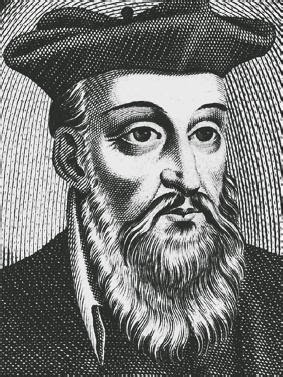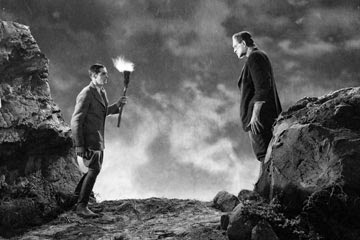On January 12, 1559, Elizabeth Tudor entered the Tower of London to prepare for her coronation as Queen of England. Her half-sister, Mary I, had died on November 17th and Elizabeth seized the reins of power immediately, but the all-important coronation was not set to take place until nearly two months later.
The date when Elizabeth would ride through the city of London to Westminster Abbey was January 15th. At the suggestion of Robert Dudley, Elizabeth consulted Dr. John Dee, the astrologist and scholar who later served as Shakespeare's inspiration for Prospero in The Tempest. Dee chose the date as most favorable to a successful reign.
Elizabeth's years of reliance on Dee puzzles some people today. How could the Tudor queen, educated, enlightened and brilliant, known for saying, "I would not open windows into men's souls," make decisions based on an astrologer? But to wonder that misreads the importance of men like John Dee in the 16th century. The more well versed in the Renaissance the ruler was, the more he or she favored the educated seers and wizards.
The career of Dee echoes that of Nostradamus in France and Heinrich Cornelius Agrippa in Germany. By looking at them together, the life of a seer comes into focus.
Nostradamus
Of all the mystics who exerted influence in the 16th century, Nostradamus is the most notorious today. He has been the subject of hundreds of books and several recent television documentaries and is even portrayed by Rossif Sutherland (Donald's son) in a key role in the popular TV series Reign.
 |
| Catherine de Medici advised by Nostradamus (Sutherland) in Reign |
Historians believe that Michel de Nostredame came from a family of Provence forced to convert from Judaism to Christianity. After years of censure, taxation and increasing acts of violence against Jews in both Spain and France, King Louis XII ordered the exile of all Jews from Provence in an edict published in 1500. The Gassonet family did not leave; they had already converted to Christianity, with their name changing from Gassonet to Nostredame, arguably one of the most Catholic names imaginable. Michel was born on December 14th in Saint-Remy-de-Provence.
 |
| Birthplace of Nostradamus in Saint-Remy |
In 1555, the first of Nostradmus's collections of prophecies foretelling the history of the world were published. The Queen of France, Catherine de Medici, who has gone down in history as a conniver and a poisoner, was also a passionate supporter of the arts, particularly architecture, and like other Renaissance patrons, was intrigued by prophecy. Many 16th century seers studied the philosophy of the ancient Greeks (as well as the Kabbalah and Arabic texts). The Queen summoned Nostradamus to the French court, and he advised her, on and off, until his death in 1566.
In the 16th century the most famous Nostradamus prophecy was a published quatrain:
"The young lion will overcome the old,
In a warlike field, in single combat,
In a cage of gold, he will pierce his eyes;
Two wounds being one he then dies a cruel death."
 |
| Based on contemporary sketch |
Many of Nostradamus' prophecies seem to have been drawn from ancient end-of-world writings by Livy and Plutarch, among others, with astrological twists. Believers credit him with predicting everything from the French Revolution and American Civil War to the assassination of John F. Kennedy and World Trade Center attacks ("earth-shaking flames from the world's center roar"). But critics say his writings were vague enough to allow for just about any interpretation. Whether Nostradamus obscured his sincerely-meant prophecies to protect himself from the Inquisition or because they were cynically concocted wholesale inventions, we can never know.
Heinrich Cornelius Agrippa
In 1818's Frankenstein, Mary Shelley writes of an impressionable young medical student's fateful moment of discovery:
"In this house I chanced to find a volume of the works of Cornelius Agrippa. I opened it with antipathy; the theory which he attempts to demonstrate and the wonderful facts which he relates soon changed this feeling into great enthusiasm. A new light seemed to dawn upon my mind, and bounding with joy, I communicated my discovery..."And so Victor Frankenstein was lost to his obsession--the creation of life.
 |
| Frankenstein: The man and his creation |
The name Agrippa was not a fictional one but belonged to Heinrich Cornelius Agrippa, a 16th century German theologian, alchemist, philosopher and magician. Shelley's use of Agrippa's beliefs to fuel her tale is not as strange as it may seem at first glance. He also played an important part in a nonfiction book written by her journalist-philosopher father, William Godwin: Lives of the Necromancers. It's clear that this group of mystical thinkers--Godwin's list includes not only Agrippa and Nostradamus but also Albertus Magnus, Roger Bacon, and a dozen others--proved fascinating to the poets and philosophers of the Enlightenment.
 |
| Heinrich Cornelius Agrippa |
Godwin wrote of Agrippa:
"He was one of the most celebrated men of his time.... It is more than probable that Agrippa was willing by a general silence and mystery to give encouragement to the wonder of the vulgar mind. He was flattered by the terror and awe which his appearance inspired. He did not wish to come down to the ordinary level."Like Nostradamus, Agrippa was a precocious student. Born in Cologne in 1486, he mastered six languages and studied medicine and law as well as the work of the Humanists. Alchemy was his passion rather than astrology, and he believed "magic comprises the most profound contemplation of the most secret things, their nature, power, quality, substance and virtues." He published De Occulta Philosophia, three volumes on magic, an influential collection still in print.
 |
| Page from Agrippa's book |
Contradictions abound in the life of Agrippa. He served the Holy Roman Emperor Maximilian in various capacities--as secretary, soldier and perhaps spy--and dedicated a book to the Hapsburg Emperor's respected sister, Margaret of Austria. Eustace Chapuys, the erudite Imperial Ambassador to Henry VIII, was Agrippa's student, friend and correspondent.
And yet the aura of the black arts clung to Agrippa. Godwin repeats the oft-told tale that a black dog accompanying Agrippa on all his travels was "a devil attendant." And it is in Lives of the Necromancers that a bizarre story is told, of Agrippa meeting Henry Howard, Earl of Surrey, in Germany and showing him, in a "magic glass," the image of his far-away mistress. For other noblemen, Agrippa summoned up the images of Ovid and "the whole destruction of Troy in a dream."
Despite his writings on magic and being a vocal critic of witchcraft trials, Agrippa was never persecuted for his beliefs, perhaps because he was protected by the Hapsburgs. He died in Grenoble in 1535.
Dr. John Dee
If Agrippa is tainted with black magic, Dr. John Dee is associated with white magic--angels, to be specific. He spent years of his life trying to decipher the language of the angels.
Of all of his mystic contemporaries, Dee was perhaps the most brilliant. Along with his spiritual studies, he is believed to have coined the phrase "British Empire" and urged both Tudor queens to create a national library (they both said no, so Dee built up the finest private library in England, if not all of Europe).
Born in 1527, Dee attended Cambridge and studied mathematics and the sciences as well as astrology and alchemy. In his twenties, he worked as a tutor and advisor for the Herbert and then the Dudley families, two powerful Protestant clans in the reign of the boy King, Edward VI.
But on the death of Edward and accession of Queen Mary, the power structure turned inside out, and Dee received a chilling lesson in loyalty. He was arrested in 1555, charged with casting the horoscopes of Queen Mary, her new husband, Philip of Spain, and Mary's half-sister Elizabeth. To look into the future of the royals, forecasting their deaths, was treason, and people had perished for such acts in the reign of Henry VIII. Moreover, Dee, a Protestant, was suspected of sympathy with the Princess Elizabeth, held in prison for her possible involvement in the Wyatt Rebellion.
 |
| Elizabeth Tudor |
Informers were found who said Dee "endeavored through enchantments to destroy Queen Mary." He was interrogated, found wanting, and referred to the Star Chamber. Though he defended himself well, Dee was then charged with heresy and delivered to the Bishop of London, Edmund Bonner, one of the most diligent persecutors of heretics, later dubbed "bloody Bonner" by John Foxe.
 |
| Edmund Bonner, bishop of London |
Things couldn't have looked bleaker for John Dee. Yet somehow he survived, not only convincing Bonner of his innocence and becoming a Catholic chaplain but even assisting Bonner in some of his interrogations of other Protestants. (He took on the "Dr." honorific because he was ordained by Bonner.) When Elizabeth took the throne, Dee rapidly switched back to the Protestant side, becoming Elizabeth's cherished special advisor, while Bonner, holding fast to his Catholic beliefs, ended up dying in prison.
Throughout his long, colorful, often controversial career, Dee would need to show nimble survivor tactics time and again, though perhaps none quite so extreme as this. Nonetheless, Dee, despite his partnership with necromancer Edward Kelley (see below), is a benevolent figure in today's pantheon of seers. In fact, it is his tall, thin, white-bearded visage and scholarly, mentorish demeanor that seems to have inspired the wizards created by J.R.R. Tolkein and J.K. Rowling.
 |
| John Dee |
It is a legacy that, one feels, John Dee would have entirely approved of.
-----------------------------------------------------------------------------
This is the latest in a series on magic in history:
From Homer to the Hobbit, the History of the Necromancer
Henry VII and the Curse of Prophecy
The Strange Life of Edward Kelley
Nancy Bilyeau is the author of the award-winning historical thriller trilogy The Crown, The Chalice and The Tapestry.
The Crown and The Chalice have been published by Simon & Schuster in North America, Orion in the United Kingdom, and DTV in Germany. The Crown was an Oprah pick for 2012 and The Chalice won the RT Reviews Award for Best Historical Mystery of 2013. The Tapestry was published this year in North America and the United Kingdom by Simon & Schuster. Follow Nancy's updates and tidbits on the world of Tudor England on Twitter @tudorscribe. For more information, go to www.nancybilyeau.com
 |
| The Tapestry goes on sale 3/24/15 |


What an interesting post, Nancy! I am reading a series of books at the moment by S J Parris where the protagonist is Giordano Bruno. They concern his stay in England when he did some work for Walsingham. John Dee and Edward Kelley appear in one of the novels, John being friendly with Brubo as they had a lot in common. I am looking forward to 'Tapestry' and will be buying it on the day of release.
ReplyDelete